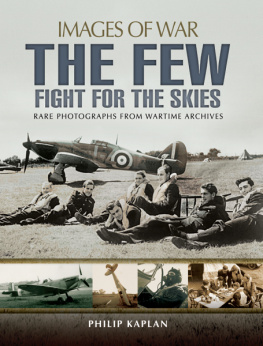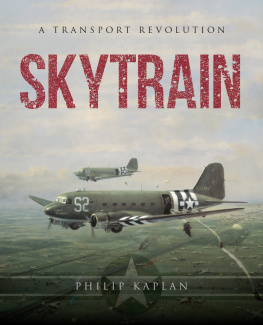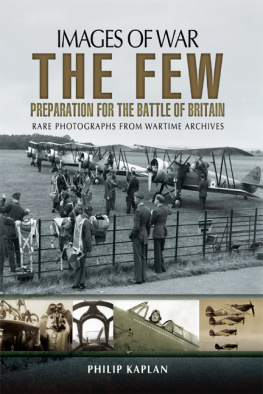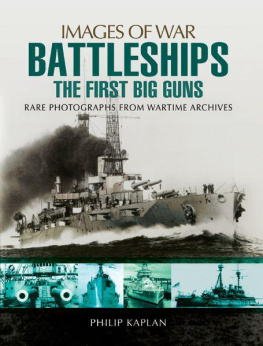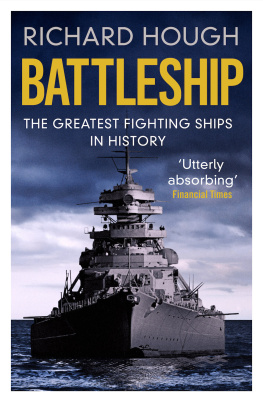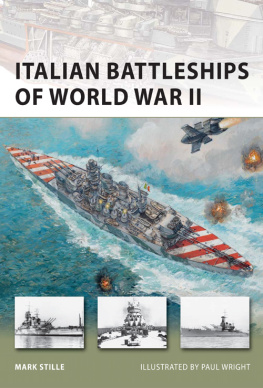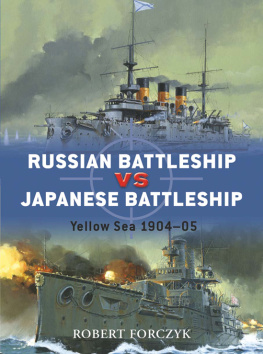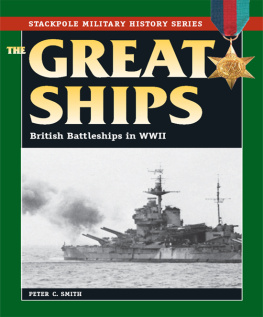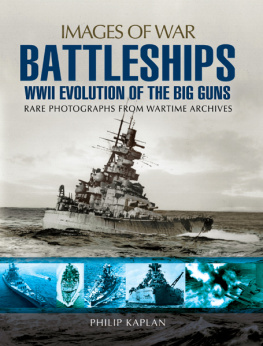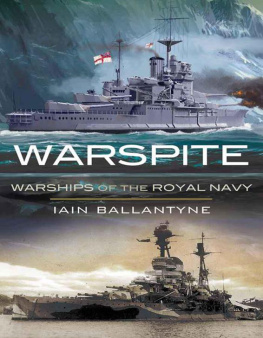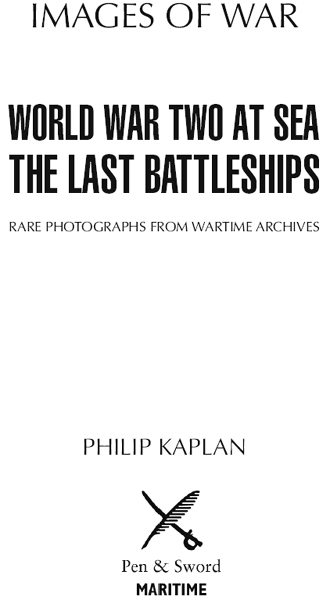
First printed in Great Britain in 2014 by
Pen & Sword Maritime
an imprint of
Pen & Sword Books Ltd.
47 Church Street
Barnsley,
South Yorkshire
S70 2AS
Copyright Philip Kaplan 2014
A CIP record for this book is available from the British
Library
PAPERBACK ISBN: 978 1 78303 638 7
PDF ISBN: 978 1 47383 628 0
EPUB ISBN: 978 1 47383 452 1
PRC ISBN: 978 1 47383 540 5
The right of Philip Kaplan to be identified as Author of this
Work has been asserted by him in accordance with the
Copyright, Designs and Patents Act 1988.
All rights reserved. No part of this book may be reproduced
or transmitted in any form or by any means, electronic or
mechanical including photocopying, recording or by any information
storage and retrieval system, without permission
from the Publisher in writing.
Printed and bound in England
By CPI Group (UK) Ltd. Croydon, CRO 4YY
Pen & Sword Books Ltd incorporates the Imprints of Pen & Sword Aviation,
Pen & Sword Family History, Pen & Sword Maritime,
Pen & Sword Military, Pen & Sword Discovery,
Wharncliffe Local History, Wharncliffe True Crime, Wharncliffe Transport,
Pen & Sword Select, Pen & Sword Military Classics,
Leo Cooper, The Praetorian Press, Remember When,
Seaforth Publishing and Frontline Publishing.
For a complete list of Pen & Sword titles please contact
Pen & Sword Books Limited
47 Church Street, Barnsley, South Yorkshire, S70 2AS
England
E-mail:
Website: www.pen-and-sword.co.uk
All photographs from the collection of the author. Efforts have been made to trace the copyright owners of all material used in this book. The author apologizes to any copyright owners we were unable to contact during this clearance process.
Contents
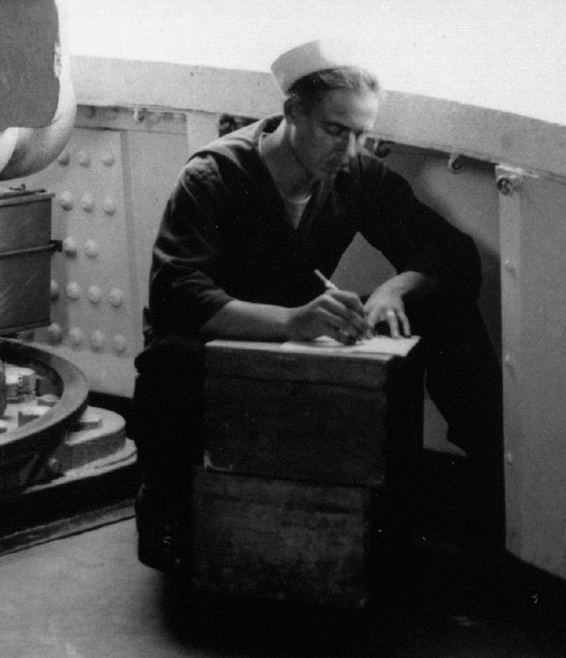
A USS Penssylvania sailor writing home.
Early Efforts
Warships of various types have taken part in battles at sea for many centuries, but it was not until the introduction of cannon as the main armament of such vessels in the fifteenth century that modern battleships began to evolve. But such ships of the line of battle remained under sail and as such relatively limited in capability until the latter part of the nineteenth century and the advent of steam power.
Until the late nineteenth century, the warships of the worlds great navies were assembled in formations known as lines of battle. When these lines of ships from opposing forces met in combat, they sailed as a line, parallel with or at an angle to a similar formation of their opponent, thus bringing their considerable rows of cannon to bear on their enemys vessels. These ships of the line of battle began to be referred to as battleships. They were the major or capital ships of their navies.
Borne each by other in a distant line, / The sea-built forts in dreadful order move; So vast the noise, as if not fleets did join, / But lands unfixed, and floating nations strove. / Now passed, on either side they nimbly tack; / Both strive to intercept and guide the wind; / And, in its eye, more closely they come back, / To finish all the deaths they left behind.from Annus Mirabilis by John Dryden
The evolution of the modern capital ship got under way at Portsmouth, England, with the sailing of the Tudor warship Mary Rose in 1511, the earliest true warship of the Royal Navy, the navy of King Henry VIII, and named for his favourite sister. The oak and elm-built Mary Rose had a waterline length of 127 feet, a beam of thirty-eight feet and a draught of fifteen feet. She was manned by a crew of about 400, and was armed with breech-loading guns made of wrought iron and muzzle-loading guns of cast bronze, by some of the worlds best gun-founders, brought over from France by Henry, who also employed a number of highly skilled bowmen on board. It was their task to kill the crewmen of enemy vessels. The Mary Rose was, unlike most of the warships of the Royal Navy at the time, designed from scratch as a fighting vessel. Much of her design, and the way in which she was equipped, included substantial input from the king himself, who was determined that she lead the field in state-of-the-art capability and outfitting for her duties in the defence of England against all real and theoretical enemies. She was the prototypical battleship, and among her many innovative characteristics was the placement of her big guns in a long row down each side of her hull, near to the waterline, allowing her gunners to fire heavy broadside barrages at enemy ships. It was an inventive alternative to the naval tradition to date of mounting the guns on the castles at both ends of the hull. Mary Rose also was constructed with her deck planking laid down edge to edge in a Carvel-type layout, making her hull more watertight.

The English King Henry VIII.
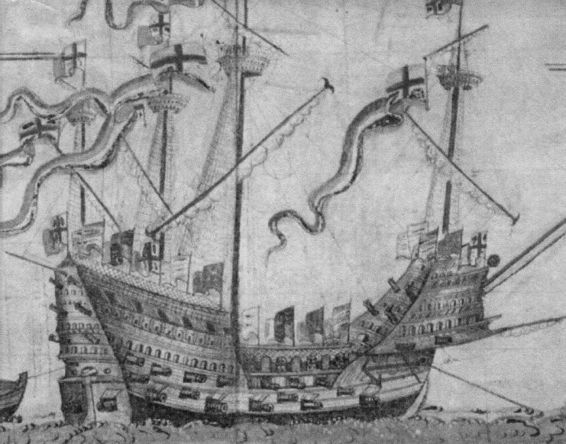
The Mary Rose, the earliest true warship of the Royal Navy, named for the kings favourite sister.

HMS Victory was commanded by Vice Admiral Horatio Nelson, and is preserved in Portsmouth Dockyard.
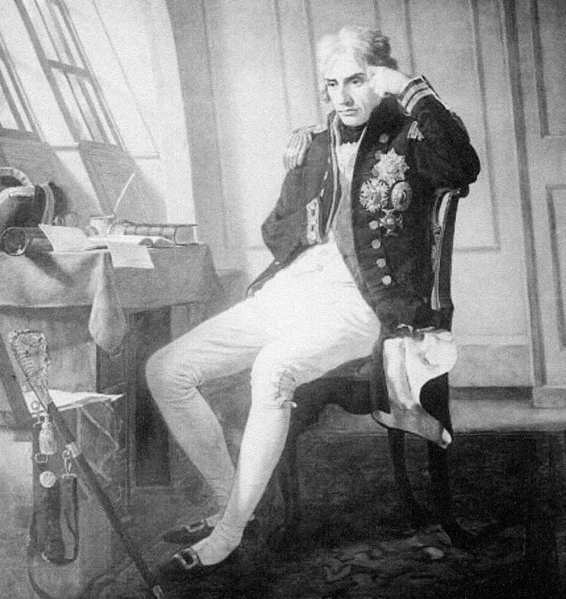
Nelson, in a portrait by Charles Lucy.
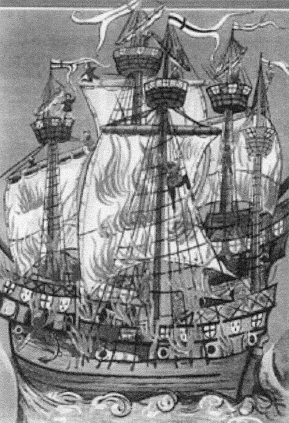
The French warship Cordilire burns in a battle with the English fleet of Admiral Edward Howard, whose flagship was then the Mary Rose.
It was in the autumn of 1511 that the Pope joined the King of Aragon in an alliance against Louis XII of France. The next year the English Parliament allied Britain with Spain and Mary Rose was readied to serve as the flagship of Admiral Edward Howard in the lead of twenty-five warships attacking the mighty French fleet at Brest on 10 August. Howard faced 222 French fighting vessels in a two-day battle. He began by striking at the French flagship, Grande Louise under the command of Vice Admiral Ren de Clermont who was unready for the arrival of Admiral Howards fleet, which he had been expecting several days later. He had been raiding French and Breton vessels, including fishing boats, along the Brittany coast in late July. When Howards ships appeared, many of the French naval officers and men were on shore celebrating the Feast of St Lawrence. In another odd turn of events, Herv de Porzmoguer, captain of the French warship Cordelire, had invited his family, together with about 300 local citizens, to a party aboard his ship, and as the English warships approached, Captain Porzmoguer had to accept the fact that he and his crew would have to fight the English with his passengers and guests aboard. Admiral Howard quickly assessed the situation and, seeing the considerable advantages he held, acted immediately to attack the Grande Louise. The heavy cannon of the Mary Rose soon destroyed the mainmast of the French warship, panicing a number of the French seamen and officers, many of whom retreated with their vessels towards Brest. With the final shots of the struggle at the end of the second day, Howards force had captured thirty-two of the French warships and 800 of their seamen.
Next page


